Although we’d already been in Bolivia for three full days, it didn’t really feel like it until we got to our first major town, Uyuni. A night there was all we needed before we embarked on our first proper Bolivian bus journey. The five of us from our tour of the Salar de Uyuni all boarded the same bus. Rebecca was taking the bus directly to the city of Sucre, ten hours from Uyuni, while Andrea, Marcus, Mahmoud and I were getting off at Potosi.
The bus was a big surprise. It was pretty clean, relatively comfortable and not over-filled. My window didn’t close properly and let in a fair bit of dust, but considering the road the poor bus had to drive on every day I’m not surprised there were a couple of problems with it! The road was really unlike anything I’ve ever experienced before. We’d been on bad roads in Cambodia and Laos – pot-holed, muddy, and narrow – but they were nothing compared to this road. I keep saying road – it was really mostly a dirt track. Most of it didn’t even have gravel on it, it was just a track. I guess it must get bulldozed occasionally to stop it from eroding, but it was very basic. The road went through streams (no bridges), dodged llamas and donkeys, and wormed its way through a number of small towns on the way.
We had one toilet stop on the way. Everyone got off the bus, and while the locals trudged off to do their business, the uninitiated among us looked around for the “Banos” sign and the inevitable concrete toilet block. But… nothing. Shocked looks of realisation crossed a few faces, and a couple of Japanese girls shrieked and rushed back into the bus. We were doing it the natural way, and once that sank in, everyone found a rock/bush/went behind the bus and did their business. As the only toilet stop on our seven hour trip, modesty was not required!
We arrived in Potosi at 4000m above sea level at the fancy new bus terminal. We all said our goodbyes to Rebecca, who was continuing on to attend Spanish lessons in Sucre, and got into a taxi to our chosen hotel. The four of us remaining decided on the same hotel, and, being unopposed to one another’s company, decided to spend some more time travelling together.
Potosi was a lovely city, situated on a hillside as if to make you all the more aware of the altitude by making you huff and puff your way up and down the streets. We were really surprised by how modern Potosi was – it’s an old mining town and was really important to Spain in its colonial heyday. In fact, it’s said that Spain was dependant on the wealth generated by the silver mines inside Cerro Rico (literally, Rich Hill), the cone-like mountain which towers above the city. That wealth persists in Potosi today, and it’s full of interesting colonial buildings, wealthy looking people and hosts a pretty plaza in it’s centre.
The four of us did a walking tour of the city from Marcus and Andrea’s Footprint guidebook, which took in some of the lesser known sights of the city and gave us a bit of a workout by walking up and down at high altitude. Somehow, though, we ended up doing the walking tour backwards by following the map instead of reading through the steps. It all got a bit confusing, and eventually I ended up navigating us by reading through the steps backwards and reading ahead to make sure we didn’t go wrong. It was all a bit confusing, but actually ended up being quite fun – I really suggest spicing up your guidebook’s walking tour by doing it backwards. We saw a few interesting things – some decorated doorways, a street which turns seven times… etc. It was good.
Separately, Mahmoud and I visited the city mint. We did a tour of the mint which sort of doubled as a museum. It was mostly pretty interesting (with a few boring paintings), and we got a bit of history of Potosi, saw the mint which is where it all happened back then, and saw a giant painted stone face on the wall which looked a bit scary.
One of the more controversial tours you can do around Potosi is the tour of the mine tunnels inside Cerro Rico. For me, it’s not something I ever thought I’d do – it really didn’t appeal (and still doesn’t), but Mahmoud, Andrea and Marcus were all pretty keen so I figured I’d give it a go. After booking the tour, we left early the following morning and got outfitted with our mining gear – trousers, jackets, boots, helmets and headlights. We then went to the miner’s market where we bought stuff for ourselves and for the miners. This included dynamite. We each bought a stick of dynamite, which later we would get to blow up. Good fun! First though, we went to the refinery where they sort out the silver from the crud that no one wants. There were all sorts of noxious chemicals floating around, so we were glad we had handkerchiefs to cover our faces with – it was really horrible stuff. Fortunately we didn’t stick around long – we were about to go somewhere more horrible.
The mines were up next, and we set off into them at a pretty hefty pace considering we were at about 4200m above sea level. Apparently we were going fast to outpace the mining cart which would be coming along shortly. After about 600m it started to get hot, and I started to get a bit freaked out. There was hardly any space, we were stooping to walk and in some cases crawling. At one point my helmet hit a wooden beam and I heard bits of gravel fall onto my helmet – ugh! The dust was bad too – apparently it can contain noxious gases and particles in places, including silicon dust which can cause silicosis. When we stopped for a rest I was having trouble breathing due to the dust, and I knew I wasn’t going any further. Mahmoud was also not keen to go on, being a bit claustrophobic (as he didn’t enjoy caving in Laos I’m not sure why he thought he’d enjoy a mine tour!). Our guide took the rest of our group on, while we waited in the dark for someone to come and get us. Sat there in the total darkness, with only our flashlights to keep us company, I was still having trouble breathing. I think I started to hyperventilate, as Mahmoud was telling me to slow my breathing down. I felt like I needed to breathe more – it was hard to breathe with the dust in the air, and to keep the dust out I had the handkerchief in front of my mouth – which was making it even harder to breathe. I was really relieved when a guide came out of the darkness, and led us back down the tunnel to the outside. I’d never been so pleased to see sunlight – I really wished I’d never gone down into that mine, it was horrible!
Once outside we chatted for a while with a drunk miner who couldn’t even stand after 24 hours in the mine and a few hours after that on hard alcohol, and then when the rest of the group returned from the mine we blew up some dynamite. Well, that’s a slight exaggeration – we held lit dynamite for a few seconds, then gave it to the guides who took it far away before it blew up. So it was all very exciting, but rather pointless and a bit of a waste of good dynamite. I was very relieved afterwards to get back to the tour office and change out of the nasty mining clothes. Having a shower back at the hotel was very pleasant, albeit slightly cold due to the temperamental electric showers which are ever-present in Bolivian hotels!
The following day we hired a taxi to take us to Sucre. It was incredibly cheap – approximately £4 each for the four of us for a three hour journey. This was only a little more than the bus, but we were able to take the taxi at the time we wanted. The journey was spectacular, in normal Bolivian fashion, and the road marginally better than the road to Potosi had been – it was mostly sealed! Our “taxi” was a sort of boy-racer type car, with a very loud exhaust – not the most petrol friendly automobile I’m sure! After three hours, we arrived in the beautiful city of Sucre.
At approximately 2500 meters elevation we really noticed the difference in altitude in Sucre. We could breathe properly, even when walking at a reasonable speed! We stayed right on the central plaza in Grand Hotel, which was a lovely little refuge from the outside world. Sucre was incredibly busy with people, and once again we were surprised by how well-off the people seemed to be. It seems that the cities of Bolivia are full of the richer people, while those who live in the countryside are much poorer. I had always thought that Bolivia would be like another Cambodia, but generally I think people have more money here. The sheer number of cars on the streets of places like Sucre is evidence of this – if people here have a vehicle it seems like it’s normally a car, rather than a motorcycle. Crossing the street in Sucre is quite frightening – you have to avoid the busy traffic. In some countries, people drive around you when you’re crossing busy roads. Here, if you’re not careful, you’re toast!
We spent a good amount of time wandering around Sucre. One of the most interesting places we visited for me was the Supreme Court. We wandered up to the building to have a close look. Out of curiosity Marcus asked the security guard if tourists were allowed in. Instantly, and without fuss, we were ushered into the building and given a free guided tour. It was really interesting! We even saw the court in session, with TV cameras present and everything. The colonial-style building was great to wander around, and I was amazed that we were able to go in with so little fuss – I’m sure that in any other country in the world we’d have no chance.
We also visited the nearby town theatre (Teatro Gran Mariscal de Ayacucho). There was nothing on, but a couple of really kind people showed us around. They even switched on all the lights, and we met a charango (a traditional Bolivian ukulele type instrument) player who chatted to us for a while. I think they were really proud of their theatre, and wanted to show us around, to share what they had with us. It was really nice.
A visit to the church, Convento de San Felipe Neri, was one of the highlights of our visit to Sucre. In this church you can climb up onto the rooftop for great views of the city, and you can even climb up into the bell towers. We visited just before sunset, and it was great to see the city lit basked in a soft, orange glow. It was a lovely spot.
My favourite place in the city though – and some might say the most random – was the Parque Cretacio, a 20 minute shuttle bus ride from the city centre. This showcases some incredible prehistoric dinosaur footprints on a vertical stone cliff, about 200m from a viewing platform where you can look at them. It’s a really impressive site – there are literally thousands of individual footprints dotted over the cliff-side, and you can see the well-preserved paths the reptiles took. The information centre is also pretty amusing, with life-sized replicas of the beasties surrounding it, roaring and groaning in bizarre ways. Our guide was enthusiastic and her English was excellent – we really enjoyed the tour. I just never thought I’d be wandering among life-sized dinosaur models in Bolivia…
We really enjoyed our time in Sucre. Unfortunately, while we were there, Andrea developed a stomach bug – as she put it, she had “small animals in my stomach”. This was not very pleasant for her as she did not eat very much. I also acquired some stomach animals a few days later, so obviously we’d eaten/drunk something we shouldn’t have! While in Sucre, we also met up with Rebecca from our tour of Salar de Uyuni for a meal, and it was nice to catch up. We spent three fun and relaxing nights in the city in total before our bus journey to Samaipata. This was to be our first experience of a night-bus in Bolivia – it was good we were feeling relaxed when we got on!
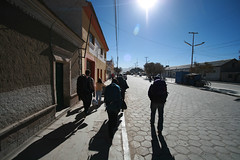
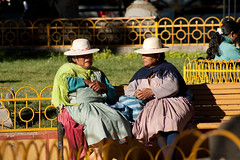
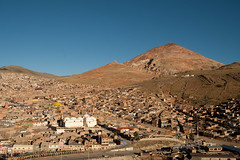
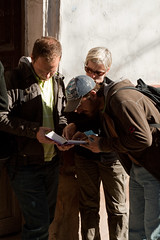
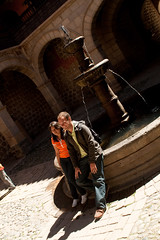
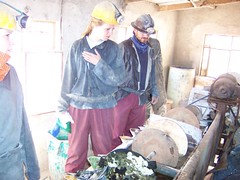
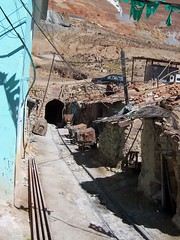
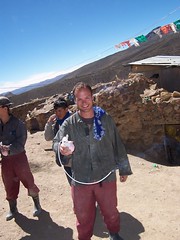
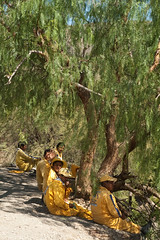
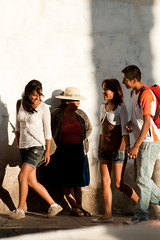
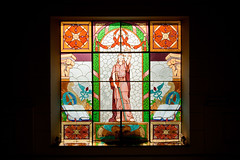
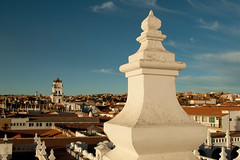
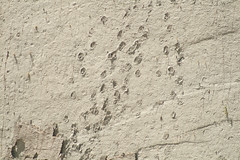
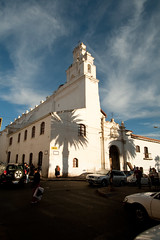



No comments:
Post a Comment